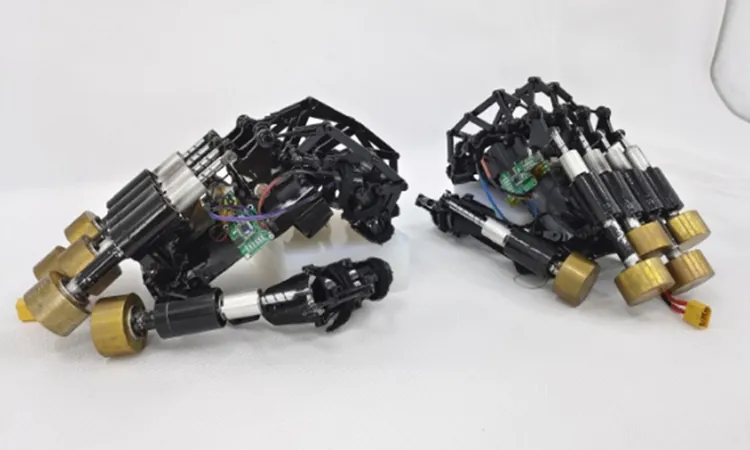
Revolutionary Nonmotorized Robotic Hand Exoskeletons: A Game Changer for Rescue and Space Missions!
2025-09-22
Author: Liam
Unlocking New Potential for Human Strength
Chinese researchers have unveiled a groundbreaking set of nonmotorized robotic hand exoskeletons designed to enhance grip strength and reduce fatigue, enabling users to lift massive loads—like heavy slate slabs weighing over 200 kilograms—effortlessly.
Innovative Technology Behind the Magic
Led by Professor Sun Shuaishuai from the University of Science and Technology of China, the team has crafted these exoskeletons using cutting-edge magnetorheological (MR) actuators. Unlike typical motorized exoskeletons, which struggle with providing strong support for gripping, these innovative devices promise superior performance with minimal energy consumption.
Transforming Rescue Operations
The potential applications are nothing short of revolutionary! Particularly in rescue scenarios—think post-earthquake missions—where equipment is often impractical due to complex environments. The exoskeletons significantly enhance operational efficiency by facilitating easier debris clearance and casualty evacuations.
Battle-Testing in Simulated Disasters
In simulated rescue operations, the effectiveness of these exoskeletons was proven. As rescuers donned the devices to lift and transport victims, the muscle activity necessary for gripping sharply decreased, indicating reduced fatigue. Remarkably, when comparing performance with and without the exoskeletons, rescue workers' maximum transport distance surged by 110%, while their respiratory rates dropped by an impressive 20%!
A Leap Towards Space Exploration
Professor Sun envisions even broader horizons. By harnessing the unique properties of MR materials, future exoskeleton designs could provide force feedback and facilitate remote robotic arm movements crucial for deep space exploration. Imagine astronauts seamlessly maneuvering tools on alien terrains!
Unmatched Efficiency and Energy Savings
The MR actuators achieve an astonishing peak holding force of 1,046 N with a mere 5 W power input—boasting a force-to-power ratio that outshines traditional methods by a whopping order of magnitude. In terms of energy consumption, they also deliver a staggering 97.7% reduction for the same output.
The Road Ahead: Enhancements on the Horizon
With participants reporting a 41.8% boost in grip strength without external power and a noticeable decrease in fatigue, the research team aims to push the boundaries further. Plans include integrating human intent recognition for seamless operation adjustments, using advanced materials to enhance durability, and refining designs for ultimate comfort and efficiency.
In the realm of robotics, the future is not just bright—it’s transformative!









 Brasil (PT)
Brasil (PT)
 Canada (EN)
Canada (EN)
 Chile (ES)
Chile (ES)
 Česko (CS)
Česko (CS)
 대한민국 (KO)
대한민국 (KO)
 España (ES)
España (ES)
 France (FR)
France (FR)
 Hong Kong (EN)
Hong Kong (EN)
 Italia (IT)
Italia (IT)
 日本 (JA)
日本 (JA)
 Magyarország (HU)
Magyarország (HU)
 Norge (NO)
Norge (NO)
 Polska (PL)
Polska (PL)
 Schweiz (DE)
Schweiz (DE)
 Singapore (EN)
Singapore (EN)
 Sverige (SV)
Sverige (SV)
 Suomi (FI)
Suomi (FI)
 Türkiye (TR)
Türkiye (TR)
 الإمارات العربية المتحدة (AR)
الإمارات العربية المتحدة (AR)